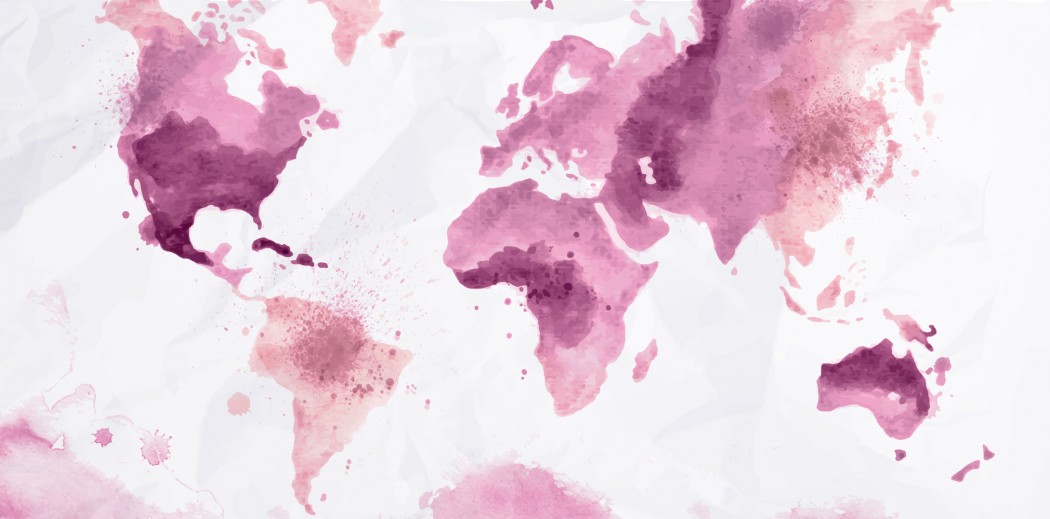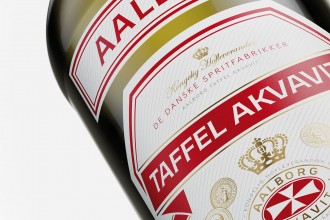Ever heard someone say they prefer Old World wines to New World? You probably thought they were just blowing smoke up your glass—and more than likely they were, because most of us just learn enough about wine to make a crudely informed decision at the bar. We know we like red or white and we know the bottle with the bird on it is pretty decent, but usually it’s like throwing a pencil at the ceiling and hoping it sticks. Well no longer; it’s time to stop wasting money on wine you don’t like. This post we’re going to explain the difference between Old and New World wines, so the next time you order a glass you’ll at least know which direction to aim.
Now let’s break it down. There are four components to understanding the difference between Old World and New World: Region, Regulation, Style, and Labeling. Let’s tackle region first. Old World refers to wines from Europe (France, Italy, Spain, etc.) and also certain regions of North Africa. New World refers to “newer” winemaking countries, like the US, South America, Australia, and South Africa. Think of old and new as labels of experience, so the Old World has been making wine since around 7000 BC, while the New World has only been in the game since about the sixteenth century. Does this mean the Old World is better than the New World? Definitely not. It just means they’re a little more set in their ways, which lead us to regulation.
Think of the New World as the Wild West, anything goes. New World winemakers are free to plant any grape they want wherever they want and use whatever techniques they want, which leads to more experimentation. But just like our college days, sometimes experimenting can lead to beautiful discoveries, and other times it’s awkward for everyone involved.
The Old World is the polar opposite. Bound by strict regulations—such as where which grape variety can be planted, which techniques are allowed, and minimum alcohol contents—Old World producers have much less freedom of expression than their New World counterparts. These regulations were established in order to maintain minimum standards of quality, but some winemakers are now saying these old laws are stifling their creativity as well as limiting their use of new techniques and technological advances to help them cope with changes in climate.
Next we have style, which when you get down to it is really what it’s all about. Think of each style as their names imply: Old World=old man style; New World=young man style. Old World wines are contemplative and earthy, like an old man who prefers browns and greys in his wardrobe. These wines show characteristics of earth, minerality, and terroir. Terroir refers to a sense of “place” found in the wine, with the emphasis placed on the non-fruit characteristics of the wine. These traits are prominent since Old World grapes are typically grown in cooler climates, so the grapes don’t usually hit the sugar levels of their New World counterparts, leading to a lower alcohol, higher acid wine.
Now for New World style. Generally speaking, temperatures in these countries are typically higher than the Old World, resulting in shorter growing seasons that create more alcohol and less acid from riper fruit. Unlike the old man style of the Old World, these wines will be more fruit forward, with minerality and earthiness taking a back seat. Think of them as the kid in loud colors and in-your-face fruitiness. Actually, now that we think about it, it kind of reminds us of our head sommelier.
Lastly we have labeling, and while this is one of the most complicated aspects of New vs. Old World and we could spend all day comparing the two, we’ll just try to trim it down to the basics. Let’s start with New World. New World wines are labeled with the grape variety: an Oregon Pinot Noir made from the Pinot Noir grape. Easy enough, right? This is when it gets tricky. Old World wines are labeled regionally: a bottle of Bordeaux is made in Bordeaux from a blend of Cabernet Sauvignon grapes and Merlot grapes and Cabernet Franc…or is it Cab Franc and Petit Verdot and Malbec…?
See what we mean? If we remember what we learned about style, then this starts to make a little more sense, since Old World wines are more focused on the terroir (place) than on the grape.
So what does all this mean for you when you’re staring at a wine list? If you’re in the mood for a lighter-bodied, subtle fruit, and earthier wine, go Old World; but if a full-bodied, fruit forward, lower acid juice is more to your liking, order a bottle of New World vino. The trick, though, isn’t to get bogged down by these generalities, but to use them as starting points in your wine exploration. Time to shove off, Magellan. We’ll see you on the other side.








